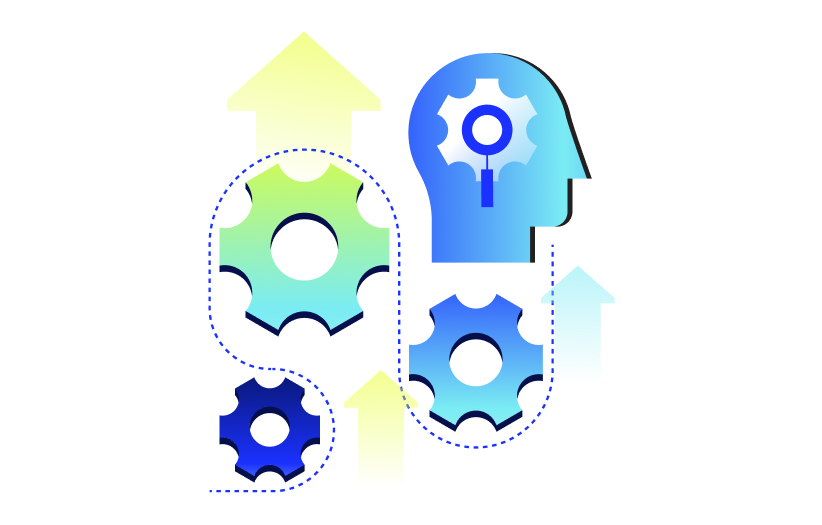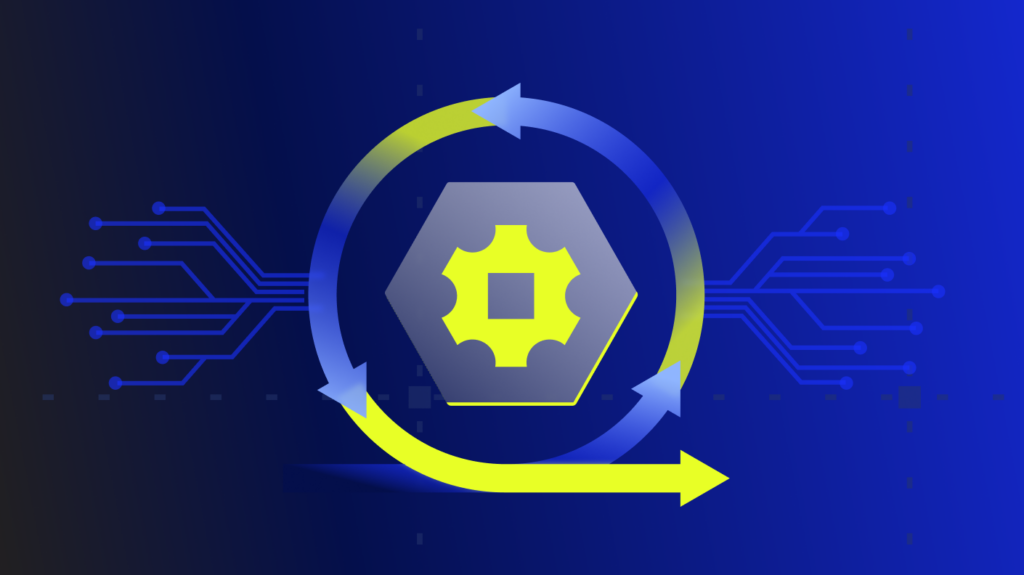The mandate is clear: Do more with less. But in IT, that’s often an impossible equation. Engineers are expected to deliver near-perfect uptime, resolve incidents instantly, and manage an increasingly complex tech stack—all while budgets tighten. Yet, despite your best efforts, you—or your team—are still chasing outages, drowning in alerts, and reacting instead of preventing.
The problem isn’t effort; it’s approach. Every 3 a.m. outage, every system slowdown, every escalation that pulls your engineers away from strategic work stems from the same fundamental issue: legacy operational models weren’t built for today’s scale, speed, or complexity. Businesses move faster, digital experiences are more critical, and expectations keep rising. Yet, despite your best efforts, your IT teams remain stuck in a reactive cycle.
AIOps promises a way out. Specifically, agentic AIOps—AI that doesn’t just detect problems but actively resolves them. No more dashboards flooded with alerts. No waiting for human intervention. Just real-time, autonomous issue resolution.
But here’s the catch: AI alone won’t fix IT. Without a clear strategy, measurable impact, and the right execution, AIOps is an expensive experiment.
So the real question isn’t “Should we invest in AIOps?”—it’s “Will AIOps deliver meaningful ROI for our specific challenges?”
In this post, we’ll break down exactly how to build a business case for agentic AIOps—one that ties AI investments to cost savings, efficiency gains, and IT performance—turning operations from a cost center into a competitive advantage.
When is AI the right answer?
Not every problem needs AI. In fact, one of the worst things an organization can do is throw AI at a problem it shouldn’t solve. That’s how companies end up with bloated, underperforming “AI initiatives” that solve little, or worse, nothing. The key is knowing when AI is the right tool—and when it’s just overkill.
AI shines in environments where:
- The data load is too overwhelming for human teams. Millions of logs, alerts, and signals stream in daily, far beyond human capacity to analyze.
- Issues are deeply interconnected. Problems don’t happen in isolation, and diagnosing root causes requires seeing patterns across vast datasets.
- Speed is mission-critical. By the time a human triages an issue, customers are already impacted. AI enables real-time remediation.
Before investing, ask: “Does AI solve this problem more efficiently than existing solutions?” If the answer isn’t a clear “yes,” it’s time to rethink the approach.
But let’s say the answer is a clear “yes.” AI can solve your problem more efficiently than existing solutions. That’s only the first step. Now comes the real challenge: Which AIOps strategy will deliver the best ROI?
AI is not monolithic. The wrong implementation can lead to bloated costs, underwhelming performance, and more operational headaches than you started with. To extract real value, you need AI that doesn’t just analyze problems but actively solves them.
With that in mind, let’s explore some options. AIOps, at its core, is about turning IT operations into a proactive, data-driven powerhouse. It’s the convergence of AI and IT operations, transforming raw data into meaningful, real-time insights. But not all AIOps is created equal.
Conventional AIOps vs. agentic AIOps
Traditional AIOps helps surface problems. Agentic AIOps solves them.
- Traditional AIOps is largely observational. It detects anomalies, correlates events, and helps teams diagnose problems faster. It’s valuable, but it still requires human intervention to take action.
- Agentic AIOps goes further—it acts autonomously. Instead of just flagging issues, it remediates them in real time, predicts failures before they happen, and continuously optimizes IT environments with minimal oversight.
How agentic AIOps delivers ROI
The value of agentic AIOps comes from action. When AI moves beyond detection to real-time resolution, IT teams see measurable gains:
- Lower costs. Less manual troubleshooting, fewer outages, and more efficient operations.
- Higher productivity. IT teams spend less time reacting and more time on strategic initiatives.
- Better reliability. Faster issue resolution means fewer disruptions and a stronger user experience.
Agentic AIOps isn’t always the answer. Just any other AI tool, it needs to be deployed where it makes sense. But for organizations facing operational bottlenecks, growing complexity, and resource constraints, it’s the next step forward.
And if AIOps is the right next step for your organization, the real challenge begins: building a business case that proves its value.
Quantifying AI ROI: How to build an agentic AIOps business case
Most AI initiatives don’t fail because of bad technology; they fail because they lack a clear, measurable business case. Up to 85% of AI projects and 70–80% of AIOps implementations fall short of expectations, often because they focus on theoretical benefits rather than tangible outcomes. AI that doesn’t drive efficiency, cost savings, or revenue growth isn’t an investment, is a costly distraction.
But when done right, AI delivers. Organizations that deploy AI effectively see an average return of $3.50 for every $1 invested. Real-world results reinforce this:
- AI reduces costs at scale, with 42% of companies reporting lower operational expenses through automation and efficiency gains.
- AI drives revenue growth, with 59% of organizations seeing increased topline performance by optimizing decision-making and improving customer interactions.
These numbers don’t happen by accident. They happen when AI is built to act. And this shift from analysis to action is what makes the difference between AI as an operational burden and AI as a business enabler.
Hard vs. soft returns
Proving AI’s value comes down to measurable impact. Some benefits show up immediately in hard numbers, while others compound over time. Both matter.
The hard ROI is what justifies investment:
- AI-powered automation reclaims IT staff’s time, with almost half of companies seeing direct cost reductions from AI adoption.
- Predictive analytics prevent multi-million-dollar outages before they happen.
- AIOps deliver tens of millions in revenue growth by optimizing decision-making and customer engagement.
The above are the results that CFOs and leadership teams demand—clear cost savings, increased revenue, reduced operational risk. But, soft ROI is just as important. Fewer outages and faster resolutions mean:
- Happier customers, driving retention and brand loyalty.
- Less burnout for IT teams, improving engagement and reducing turnover.
- Greater strategic focus, as automation eliminates repetitive tasks.
Build your AIOps business case
Getting high ROI from AI is about making a business case that holds up under scrutiny. AI should be solving real problems, not just adding complexity to your IT stack. Before making an investment, ask yourself three critical questions:
- Does it solve a high-value problem? If AI isn’t tackling a pressing issue—like relentless alert fatigue, recurring outages, or security threats—it’s a distraction, not a solution.
- Can you measure success? AIOps needs to drive tangible outcomes, whether it’s faster incident resolution (MTTR), improved system reliability, or cost savings. If you can’t quantify impact, you can’t justify the investment.
- Is AI truly the best tool for this? Some problems don’t need AI—traditional automation or process improvements might be enough. AI should be deployed where it outperforms alternatives, not where it merely replaces existing tools.
Once you’ve validated that AIOps solves the right problem, can be measured, and is the best solution, follow this checklist to build a compelling business case:
Step 1: Identify the business problem & projected impact
What’s broken? Define the specific operational inefficiencies that AIOps will solve. Examples include:
- Alert fatigue overwhelming IT teams
- Lengthy incident resolution times (high MTTR)
- Frequent outages impacting revenue & customer experience
- Rising operational costs due to manual troubleshooting
Then, quantify the pain.
- How many hours does IT spend resolving incidents today?
- How much revenue is lost during downtime?
- What’s the current cost of inefficiencies (e.g., redundant tools, excessive labor hours)?
Step 2: Define expected outcomes & KPIs
Next, set measurable goals that will prove AIOps is delivering value. Focus on KPIs that track efficiency gains, cost reductions, and improved system performance:
- Incident resolution speed (MTTR), e.g. AI will reduce mean time to resolution by 30-50% through automated root cause analysis and remediation.
- System uptime & reliability, e.g. AI will reduce unplanned downtime by 40%, improving SLA adherence and overall availability.
- Operational efficiency, e.g. AI will reduce escalations to engineers by 50%.
- Cost savings, e.g. AI will cut annual IT incident management costs by $500,000 through automation-driven efficiency.
- IT team productivity, e.g. IT teams will spend 40% less time on repetitive troubleshooting, reallocating efforts to strategic initiatives.
Step 3: Perform cost vs. benefit analysis
Estimate the total cost of ownership (TCO). Factor in:
- Software licensing costs
- Implementation & integration expenses
- Internal training & change management
Then, compare costs with the “do-nothing” scenario.
- What will ongoing inefficiencies cost in lost productivity and IT overhead?
- How much revenue is lost due to slow incident response and unplanned outages?
Step 4: Address risk & change management
Be prepared to mitigate common objections. Executives will ask:
- “Will AI replace jobs?” → No, agentic AIOps levels up IT teams by automating repetitive tasks, allowing them to focus on higher-value work.
- “Is AI reliable?” → AI must be deployed with human oversight and continuously optimized to prevent false positives.
- “What’s the integration impact?” → AIOps should be vendor-agnostic and work alongside existing ITSM and observability tools.
Outline change management strategies.
- Provide training for IT teams to work alongside AI-driven automation.
- Start with low-risk, high-impact automation before scaling.
Step 5: Get executive buy-in
Tell the story with numbers. Your proposal should be data-backed, clear, and tied to business impact. Frame AIOps as a strategic investment that enhances efficiency, not just another IT expense.
- Lead with ROI: “For every $1 invested, we project a $3.50 return in under 14 months.”
- Show competitive urgency: “Companies using AI in IT operations outperform competitors by reducing downtime and IT overhead.”
- Demonstrate immediate impact: “We can reduce IT ticket backlog by 40% in the first six months.”
AI investments live or die by proven impact. The best way to secure buy-in is to tie AIOps to business-critical metrics like uptime, operational efficiency, and cost reduction.
Bridging the business case to real-world impact
A critical part of building a strong AIOps business case is understanding who benefits most—and ensuring the right stakeholders are in the room. Executive buy-in hinges on proving ROI, but securing adoption requires alignment across the teams that will see the greatest impact.
AIOps is a strategic shift that transforms how multiple functions operate. The teams drowning in alerts, struggling with outages, and stretched thin by manual troubleshooting are the ones who will advocate for AIOps if they see its value firsthand.
Who benefits most from agentic AIOps?
AIOps is built for high-volume, high-velocity IT environments where human-led monitoring and troubleshooting are no longer scalable. The teams that see the greatest impact include:
- IT operations & NOCs: Reduces alert fatigue, automates root cause analysis, and improves system uptime by preventing incidents before they escalate.
- Cloud & infrastructure teams: Optimizes performance across hybrid and multi-cloud environments by dynamically adjusting resources and mitigating disruptions.
- Cybersecurity & incident response: Strengthens threat detection and response by correlating security events in real time, reducing breach containment time.
- Site reliability engineering (SRE) teams: Drives observability and automates remediation, allowing engineers to focus on long-term system improvements instead of firefighting outages.
Key agentic AIOps use cases
To build a strong business case, you need to prove where it drives the most impact. Common use cases include:
- Reducing IT noise & alert fatigue: Filters out false positives and low-priority alerts, ensuring teams focus only on meaningful incidents.
- Accelerating root cause analysis: Correlates data across infrastructure, applications, and networks to pinpoint failures faster than manual troubleshooting.
- Automating incident remediation: Resolves recurring issues autonomously, reducing mean time to resolution (MTTR) and improving service reliability.
- Predicting & preventing outages: Uses machine learning to detect patterns that precede failures, allowing teams to fix issues before they impact users.
- Improving security posture: Identifies anomalies and correlates security threats across systems, reducing breach detection and containment times.
Beyond automation, AIOps fundamentally reshapes how IT teams operate. Instead of reacting to problems, teams can proactively optimize infrastructure, improve system reliability, and shift resources toward innovation.
Challenges that undercut AI ROI
Clearly, agentic AIOps has the potential to dramatically improve IT efficiency and reduce costs, but too many deployments fall short of expectations. The problem isn’t the technology—it’s how it’s applied. As you build your business case, consider these potential pitfalls to watch out for:
- Fragmented observability: AI can’t correlate events or automate responses if logs, metrics, and traces are scattered across multiple tools.
- Unclear success metrics: Without defined KPIs like MTTR reduction or uptime improvements, it’s impossible to prove AIOps is working.
- One-off deployments: AIOps must be integrated across IT operations to deliver sustained impact—not limited to isolated use cases.
- Neglecting optimization: AI is not set-and-forget—models degrade over time without continuous refinement.
Investing in agentic AIOps is a no-brainer
Agentic AIOps is about transforming IT from a reactive cost center into a proactive force for business resilience and growth. But success isn’t guaranteed. Too many AI projects fail because companies chase innovation without a clear business case, measuring outputs instead of outcomes.
The organizations that see the highest ROI follow a different approach. They start with a problem, not a product. They tie AI directly to measurable business impact—reducing MTTR, preventing outages, and cutting costs. They treat AIOps as a long-term investment, not a one-time deployment.
The difference between AI as an expense and AI as a driver of efficiency comes down to execution. Companies that deploy agentic AIOps strategically, track the right metrics, and continuously optimize will see rapid returns. Those that don’t will waste time, money, and trust.
The choice is simple: Let complexity dictate IT operations, or use AI to take control.
Subscribe to our blog
Get articles like this delivered straight to your inbox








